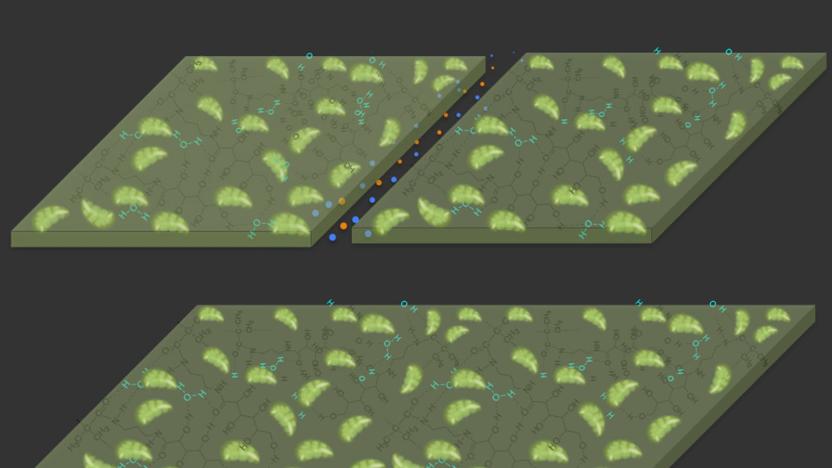ucriverside
Latest

Self-repairing material plucks carbon from the air
Scientists might have a particularly clever way to help the environment: they've developed a material that can not only heal itself, but could reduce CO2 levels in the process. The substance uses its combination of a gel-like polymer with chloroplasts (cell elements that handle photosynthesis in plants) to grow by snatching carbon from the air after exposure to light. If you cracked or scratched an already-solidified piece of this material, the newly exposed sides would promptly expand and fill the gap without requiring heat, ultraviolet light or other special reactions like you see with existing self-healing products.

Scientist's new rewriteable 'paper' is actually made of glass or plastic
If you ask us, the idea of rewritable paper seems pretty redundant no matter how high-tech it is. Apparently that didn't cross the mind of scientists at the University of California, Riverside. See, that's where Yadong Yin and his colleagues are using special color-switching dyes (called "redox") and an ultra-violet light to put text on a physical medium. In this case, that's a glass or plastic film like the tile above. The school says that these can be rewritten some 20 times without a significant loss in contrast or resolution, and could presumably replace the dead trees we're used to printing documents on. At this point, you're probably wondering how you erase the old text off, and that's fair -- even your favorite rubber pencil-cap won't do a thing here.

Scientists identify insects by listening to the music of their wings
It's sometimes tricky to identify insect species, but it's also important -- you want to quickly find out whether you're dealing with a disease-carrying threat or a harmless fly. That won't be an issue once UC Riverside scientists get their audio identification system into the field. Their system uses lasers to translate the fluttering of an insect's wings into an audio signal; since each wing beat has its own music-like tempo and tone, it's possible to identify critters with uncanny accuracy. You can confirm a species 88 percent of the time purely through sounds, and the rate only gets higher when you factor in the location and time of day.

